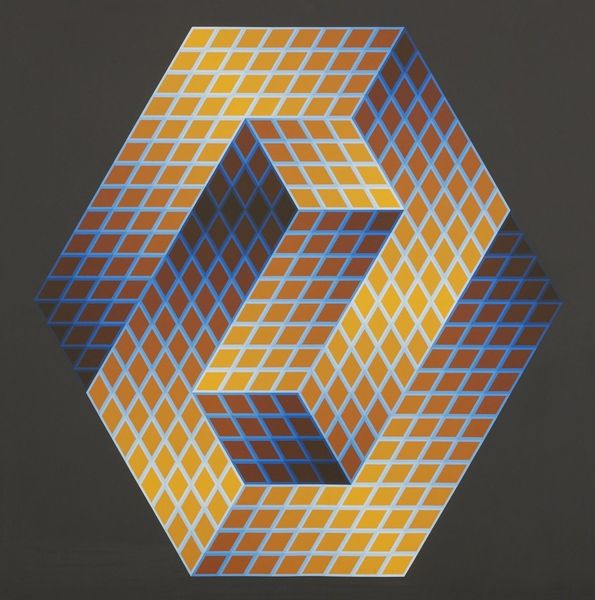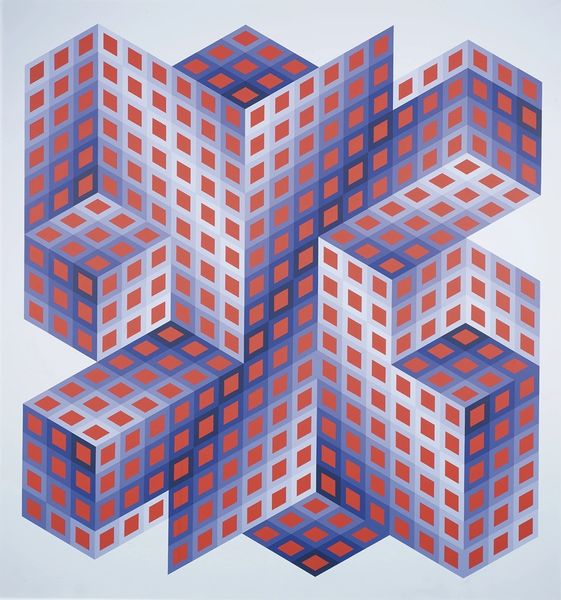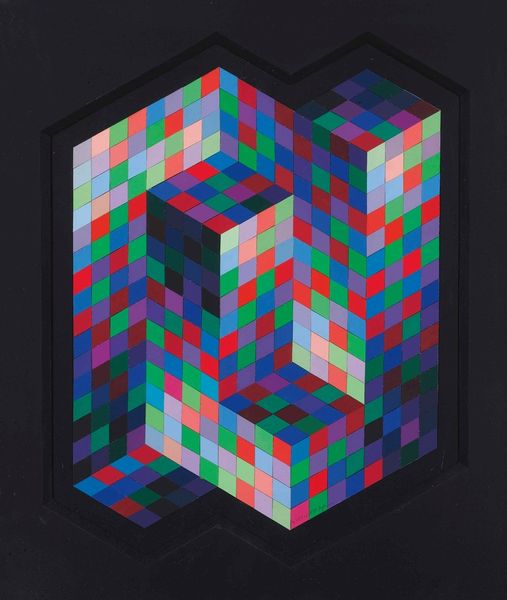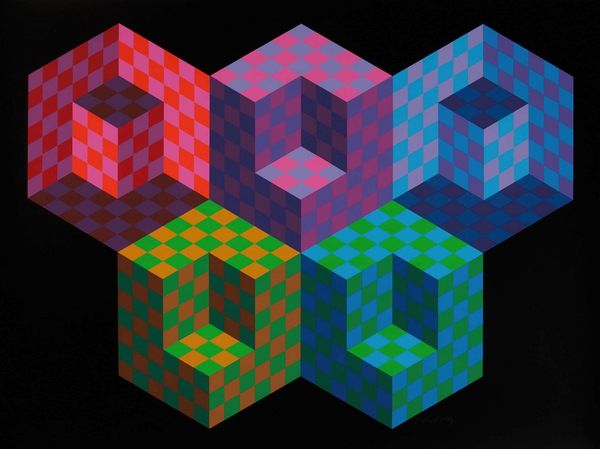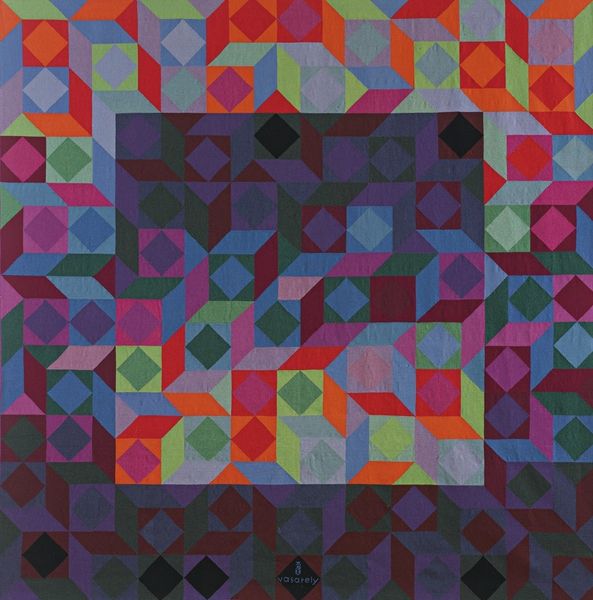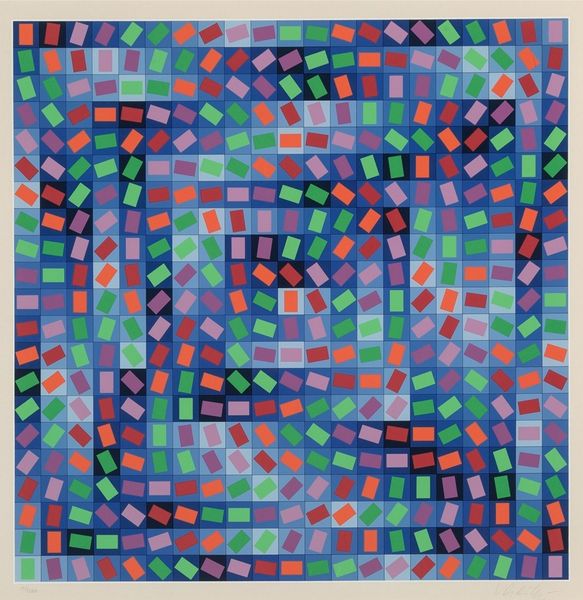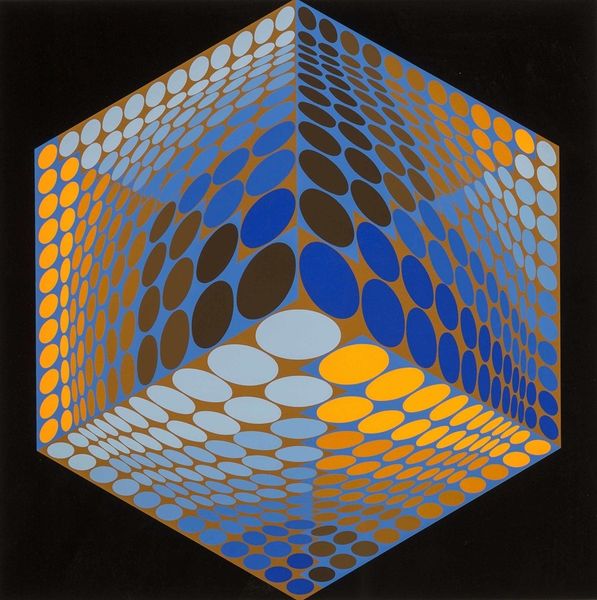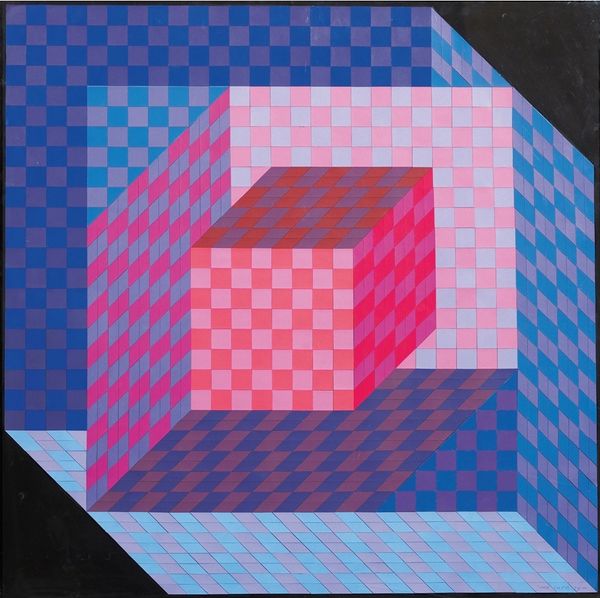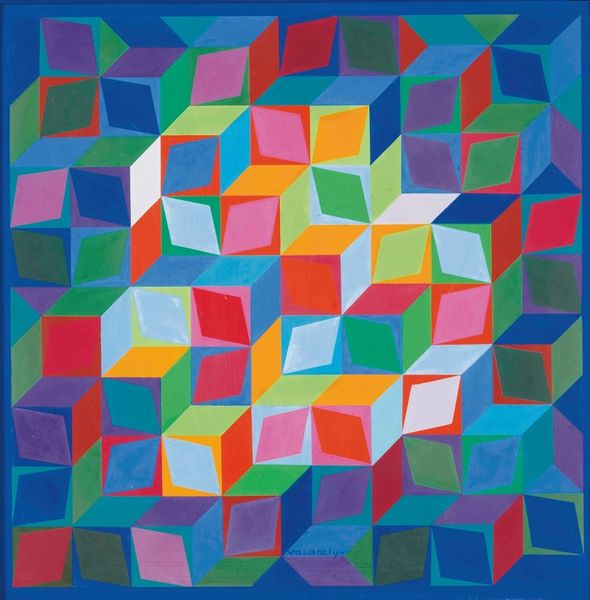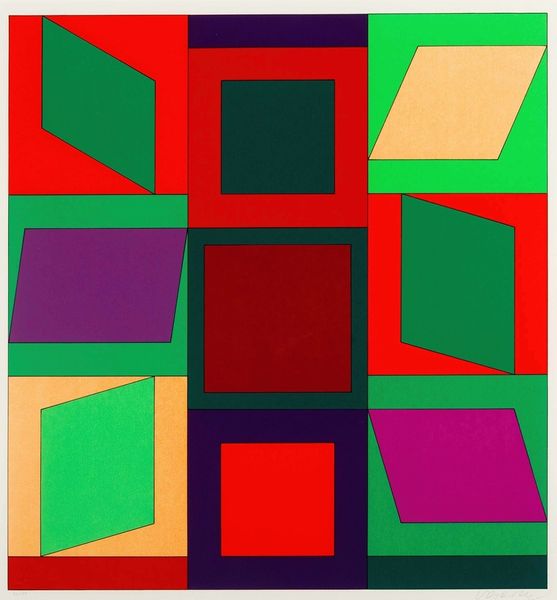
acrylic-paint
#
op-art
#
postmodernism
#
pop art
#
acrylic-paint
#
abstract
#
geometric pattern
#
geometric
#
geometric-abstraction
Copyright: Modern Artists: Artvee
Curator: Victor Vasarely's "OSLOP-X-2," an acrylic on canvas work from 1984, pulses with optical energy. Editor: My first impression is that it's playful but unsettling. These geometric shapes, the candy colors against the void… it almost makes me feel dizzy! Curator: It's meant to be disorienting, even destabilizing. Vasarely, a key figure in Op Art, aimed to challenge our perception and understanding of space. Consider the social climate of the 1980s – the rise of technology, shifting realities, anxieties about the future... Editor: Absolutely. These interlocking, impossible shapes echo the era's anxieties around control and perspective. Each form, comprised of gridded circles and squares, evokes both order and chaos, questioning the very nature of stable ground during a period of intense political polarisation. Curator: Right, the grid, typically associated with rationality, becomes warped, illusory. And I find it telling he embraces such a visual vocabulary during the apex of Postmodernism – a movement critiquing established narratives, deconstructing visual certainties and power structures, reflecting this growing instability. Editor: I'm also struck by Vasarely's use of color. Red and blue are often employed for corporate branding, reinforcing the idea that even in seemingly abstract art, social influence remains omnipresent. The optical illusion can symbolize deceptive structures present in societal organizations. Curator: An excellent point. Vasarely had this ideal, this vision of art being democratic, accessible to all. His aesthetic aimed to be universal and his art even scalable and reproduced industrially; that would free art of elite patronage, and integrate visual joy in everyone's life. The original, in this context, seems almost incidental, while the reproduction can live anywhere. Editor: Yes, but mass distribution raises questions about commodification. Is democratization possible if art's message gets diluted or manipulated? The dream of utopian accessibility may well be contaminated with capitalist ideals. Curator: Certainly, the utopianism of the era came hand-in-hand with its commodification. Editor: Ultimately, it reminds us how artists and movements cannot escape the socio-political environments they operate within. Curator: Exactly, even at their most abstract. Editor: Thinking about today's world with information overload and manipulated truths, “OSLOP-X-2” remains uncannily relevant. Curator: Indeed. An interesting intersection between pure formalism, postmodern criticism and the enduring societal anxieties we continue to struggle with today.
Comments
No comments
Be the first to comment and join the conversation on the ultimate creative platform.

